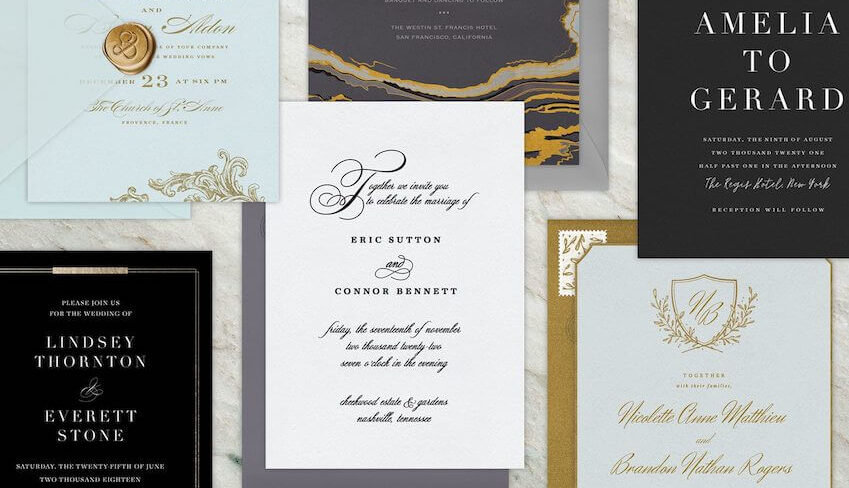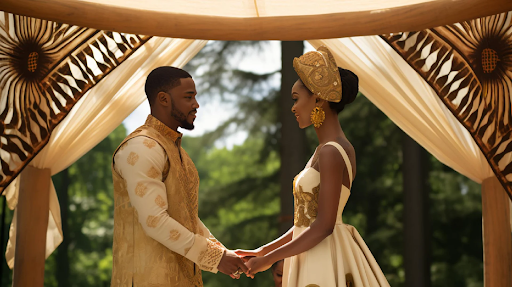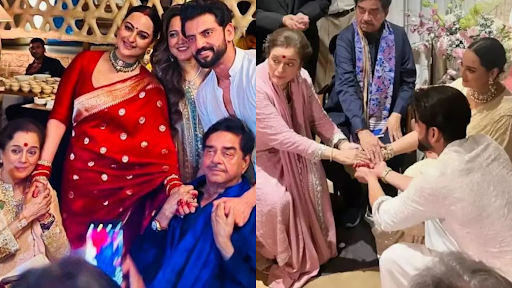Introduction
In an age where digital communication dominates, the traditional wedding invitation holds a special significance. It rises above basic formality. These carefully crafted pieces of stationery not only announce the union of two souls. It reflects the cultural heritage and customs.
It also gives symbolic meanings deeply rooted in diverse traditions around the world. It reflects the couple’s cultural, social, and personal values. Traditional wedding invitations have been a significant part of wedding celebrations. It plays a crucial role in modern weddings.

Let's embark on a journey through the traditional wedding invitations and uncover the rich meanings they carry.
The Art of Elegance and Etiquette
Traditional wedding invitations are often imbued with a sense of elegance and formality, reflecting the solemnity of the occasion. From the choice of paper, typography, and design elements to the wording itself, every detail is carefully curated to convey respect and honor to both the guests and the sanctity of the ceremony.
Symbolic Colors and Motifs
Colors and motifs used in traditional wedding invitations carry profound symbolic meanings across cultures.
For example:
- White symbolizes purity, innocence, and new beginnings in many Western cultures.
- Red: represents luck, prosperity, and happiness in Chinese and Indian weddings.
- Gold: Signifies wealth, luxury, and auspiciousness in many cultures.
- Floral motifs: often used to symbolize growth, beauty, and fertility.
These colors and motifs not only adorn the invitations but also set the tone for the entire wedding celebration, aligning with cultural beliefs and aesthetic preferences.

Incorporating Cultural Symbols
Beyond colors and motifs, traditional wedding invitations frequently incorporate cultural symbols that hold special significance:
- Symbols of love and unity, such as intertwined rings, hearts, or love knots.
- Religious symbols: like crosses, crescent moons, or the Om symbol, depending on the faith of the couple.
- Family crests or monograms: reflecting lineage and familial pride.
These symbols serve as visual markers of cultural identity and spiritual beliefs, inviting guests to partake in the couple’s heritage and traditions.
Formal Language and Etiquette
The wording of traditional wedding invitations is crafted with precision, adhering to established etiquette while conveying essential details:
Host line: Specifies who is hosting the wedding, traditionally the bride’s parents, although modern invitations may include a variety of hosts.
- Header: The top section of the invitation that includes the couple’s names and title (Mr. & Mrs., Dr. & Mrs., etc.).
- Greetings: The formal greeting that addresses the guests (e.g., “Dear Friends and Family”).
- Host Line: The line that indicates who is hosting the wedding (e.g., “Together with their families”).
- Request line: Politely requests the presence of guests at the ceremony.
- Date, time, and venue: Clearly states the logistical information for the event.
- RSVP details: Requests a response from guests for planning purposes.
The formal language used in traditional invitations reflects respect for protocol and ensures clarity in conveying essential information to guests.

Honoring Ancestral Traditions
In many cultures, traditional wedding invitations are not just announcements but tangible expressions of respect for ancestral traditions. They uphold customs passed down through generations, reinforcing family ties and community bonds. By adhering to these traditions, couples honor their heritage and pave the way for future generations to cherish and uphold cultural legacies.
The Invitation as a Keepsake
Beyond its functional purpose, a traditional wedding invitation serves as a cherished keepsake—a tangible reminder of a momentous occasion in the couple’s lives. It captures the essence of their union, encapsulating the hopes, dreams, and cultural identities of both partners.
Some popular traditional wedding invitation styles include
- Formal: classic, elegant designs with ornate typography and lavish graphics.
- Vintage: distressed or aged designs with antique-inspired typography and imagery.
- Rustic: Natural materials like burlap, twine, or wood accents with earthy colors and simple typography.
- Modern: clean lines, bold typography, and minimalist designs with a focus on negative space.

Conclusion
In conclusion, traditional wedding invitations are not basically pieces of paper. They are repositories of cultural heritage, symbols of unity, and expressions of profound meaning. By embracing the customs and symbolism fixed in these invitations. Couples honor their past, celebrate their present, and pave the way for a future enriched by the continuity of traditions.
As guests receive these invitations. They are warmly invited not only to witness but also to participate in the timeless rituals. That binds families and communities together in love and celebration.
Traditional wedding invitations are a beloved tradition. They add a touch of romance and sophistication to any wedding celebration. Whether you’re planning an intimate gathering or a grand affair, a beautiful, handcrafted invitation sets the tone for an unforgettable day.

